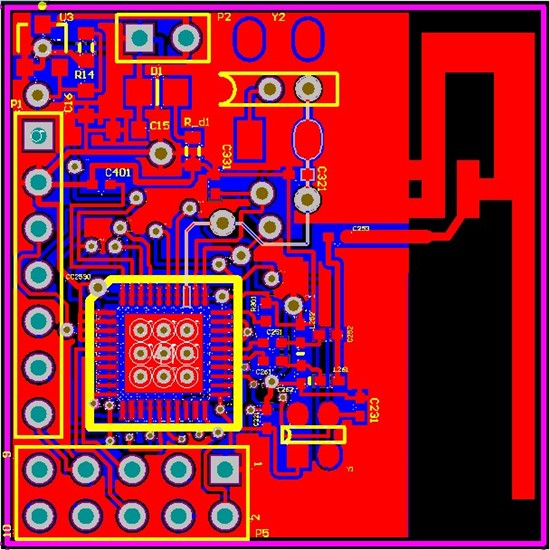i design an application of CC2530 recently.
in my application ,i use the usart(in uart model)to recive number and send it to the air by the rf.
i have configured that the I/0 and the UART is right. but the rf isn' working.
my question is :
(1)is my RFdesign is right(two inductor which value is 2nH,i use 1.8nH to instead.)
(2) how to debug my rf part of my application.

